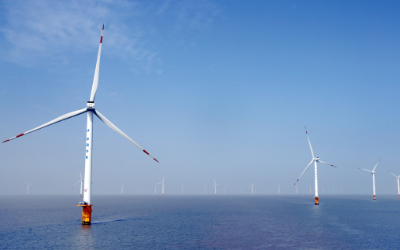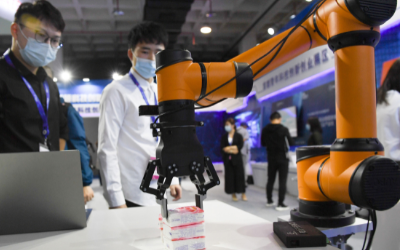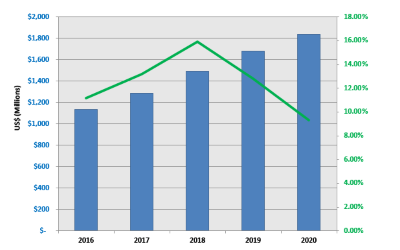Flat demand in US starts to hit firms in China
Textile and apparel imports from China have remained flat in US after some sizable percentage gains from 2000 to 2009.
Lei Shengzu, manager of China Textiles (Shenzhen) Co, does not mince his words about the future.
"The outlook for the United States textile and apparel market remains clouded by poor visibility," he said.
Lei visited shopping malls and retail stores when he was in New York recently for a three-day international textile and apparel sourcing show at the Jacob K. Javits Convention Center.
"There are few people buying clothes by piles, which, however, was common before the global financial crisis," he said. "Consumer habits have changed since the start of the crisis in 2007."
Last year, the US imported $467 billion worth of goods from China, compared with $440 billion in 2013, according to the US Census Bureau. But through May 2015, imports from China have averaged $37.1 billion a month, which would project to a yearly total of $445 billion.
Textile and apparel imports from China have remained flat after some sizable percentage gains from 2000 to 2009. According to the Office of Textiles and Apparel in the US Department of Commerce, total textile and apparel imports were $41.8 billion in 2014, compared with $41.7 billion in 2013, a rise of only 1.49 percent.
Tepid consumer spending is also echoed by the US GDP report for the first quarter of this year. It showed consumers ratcheted back spending, a key factor in slowing economic growth.
Personal consumption expenditures rose at a downwardly revised 1.8 percent rate from January through March. Spending on services climbed 2.5 percent, but purchases of goods rose 0.5 percent. By contrast, consumer spending was up 4.4 percent in the final quarter of last year.
US GDP contracted at a 0.7 percent seasonally adjusted annual rate in the first quarter, from an initial estimate of 0.2 percent, according to Commerce Department data released in May.
The US Federal Reserve is forecasting growth of 2.5 percent for the next two years, only marginally above the tepid rates from the start of the recovery.
The Financial Times reported after years of virtually no income growth, Main Street is unprepared for positive price fluctuations. Consumers have opted to pocket the recent gains from lower gasoline prices rather than spend them.
Lei said that as the economy becomes increasingly globalized, the ongoing recession in the eurozone is likely to put a dent in the US economic recovery. Lei said he believes the market needs at least two or three years to rebound. Industry insiders have realized that it is harder in the US to find buyers for high-priced, high-end fabrics and products.
"And US buyers tend to be more picky and sensitive in price," said Deng Zhijuan, an official from Shanghai-based High Fashion Textile and Manufacturing Co.
"Big deals are also hard to make. Many buyers are just (looking) for some small quantity shipments. They are either independent designers or online retailers."
Still, there are some bright spots. Zhu Jing, manager of Ningbo Aoqi Technological Knitting Co, said that although the bids are lower, there is still some profit margin.
"As the Chinese market has been open for decades, it has fostered a wealth of potential buyers and business partners who are willing to do businesses with China," he said.
"The outlook for the United States textile and apparel market remains clouded by poor visibility," he said.
Lei visited shopping malls and retail stores when he was in New York recently for a three-day international textile and apparel sourcing show at the Jacob K. Javits Convention Center.
"There are few people buying clothes by piles, which, however, was common before the global financial crisis," he said. "Consumer habits have changed since the start of the crisis in 2007."
Last year, the US imported $467 billion worth of goods from China, compared with $440 billion in 2013, according to the US Census Bureau. But through May 2015, imports from China have averaged $37.1 billion a month, which would project to a yearly total of $445 billion.
Textile and apparel imports from China have remained flat after some sizable percentage gains from 2000 to 2009. According to the Office of Textiles and Apparel in the US Department of Commerce, total textile and apparel imports were $41.8 billion in 2014, compared with $41.7 billion in 2013, a rise of only 1.49 percent.
Tepid consumer spending is also echoed by the US GDP report for the first quarter of this year. It showed consumers ratcheted back spending, a key factor in slowing economic growth.
Personal consumption expenditures rose at a downwardly revised 1.8 percent rate from January through March. Spending on services climbed 2.5 percent, but purchases of goods rose 0.5 percent. By contrast, consumer spending was up 4.4 percent in the final quarter of last year.
US GDP contracted at a 0.7 percent seasonally adjusted annual rate in the first quarter, from an initial estimate of 0.2 percent, according to Commerce Department data released in May.
The US Federal Reserve is forecasting growth of 2.5 percent for the next two years, only marginally above the tepid rates from the start of the recovery.
The Financial Times reported after years of virtually no income growth, Main Street is unprepared for positive price fluctuations. Consumers have opted to pocket the recent gains from lower gasoline prices rather than spend them.
Lei said that as the economy becomes increasingly globalized, the ongoing recession in the eurozone is likely to put a dent in the US economic recovery. Lei said he believes the market needs at least two or three years to rebound. Industry insiders have realized that it is harder in the US to find buyers for high-priced, high-end fabrics and products.
"And US buyers tend to be more picky and sensitive in price," said Deng Zhijuan, an official from Shanghai-based High Fashion Textile and Manufacturing Co.
"Big deals are also hard to make. Many buyers are just (looking) for some small quantity shipments. They are either independent designers or online retailers."
Still, there are some bright spots. Zhu Jing, manager of Ningbo Aoqi Technological Knitting Co, said that although the bids are lower, there is still some profit margin.
"As the Chinese market has been open for decades, it has fostered a wealth of potential buyers and business partners who are willing to do businesses with China," he said.








